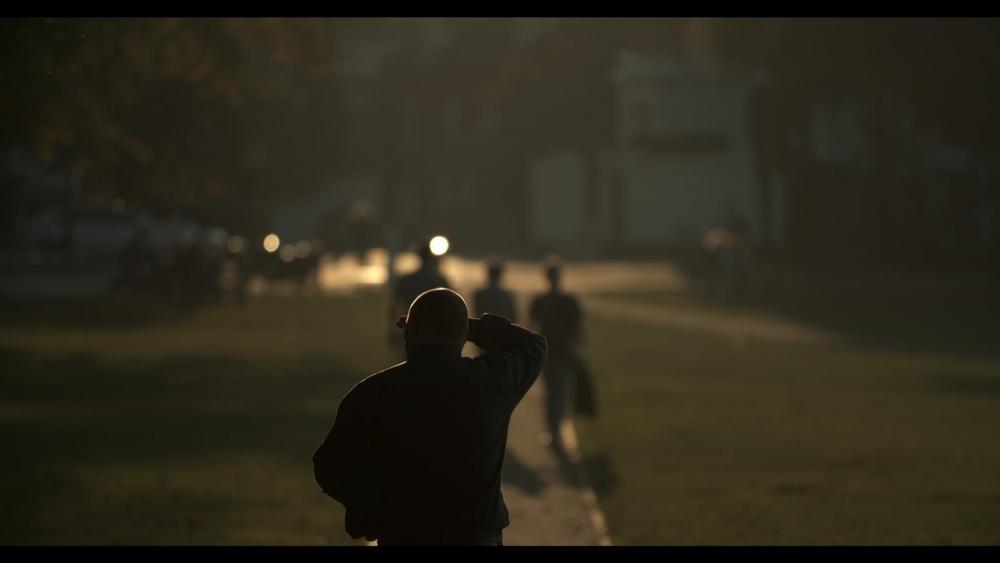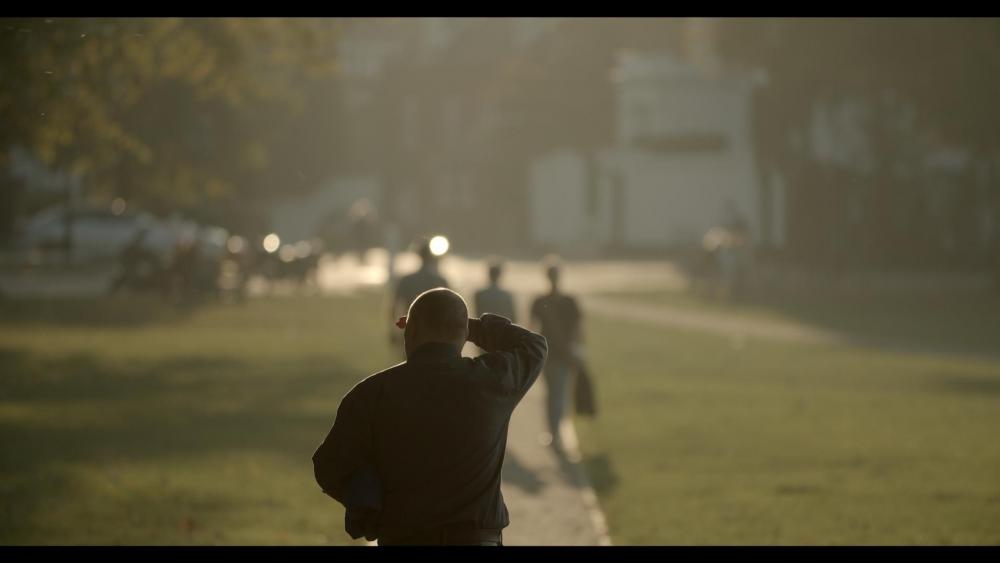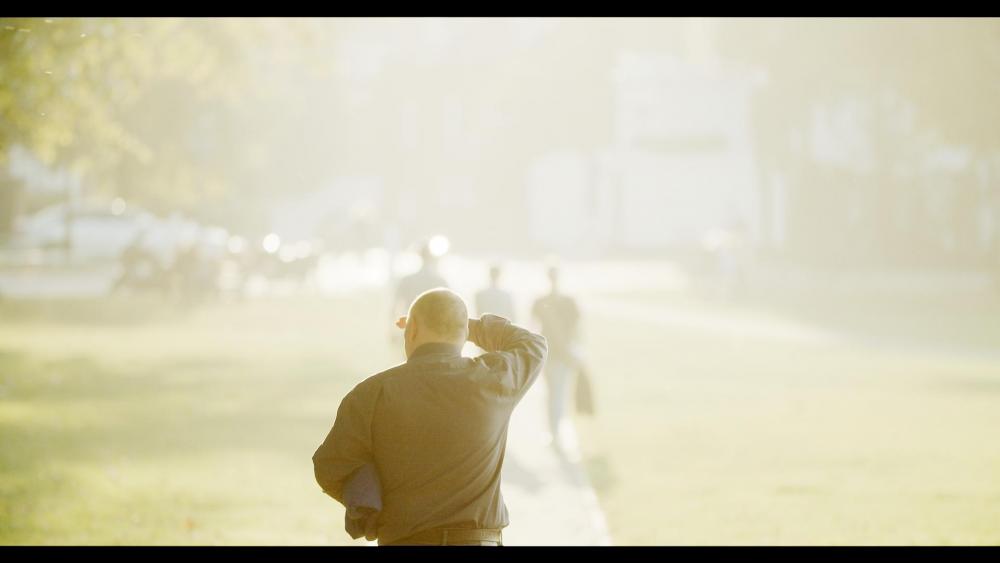-
Posts
7,835 -
Joined
-
Last visited
Content Type
Profiles
Forums
Articles
Everything posted by kye
-
No no no @kaylee.. your style as a film-maker, not as a forum-user ???
-
This sure is a pretty complicated topic. I get that if you shoot in Prores it is applying a log curve of some kind which shifts the middle point more than the highlights and shadows. A variant of BMD Film perhaps. But i'm still confused about RAW - is the RAW signal still in Linear? Sensors see in linear, so if they're somehow changing it then surely that's no longer RAW?
-
Yeah, I've been on maybe a dozen no-budget film sets, probably all 6-12 people crews, and it's nothing like making films by yourself. Being a Youtuber might half-qualify you for being a runner, but that's barely a qualified position anyway, so....
-
Yeah, and let's talk about something other than equipment
-
If you showed your entire catalogue to a bunch of strangers, what defining characteristics would they identify in your work? Do you like your style? What makes you do things like that? How did you learn? And for bonus points, what one characteristic would you want to add to your style if you could just snap your fingers and have it? For me, I don't think I have a good answer as my style is still changing and developing, but I think I have pretty good composition, both in terms of framing but also moving the camera around to get the best angles. I make home videos and they are mostly set to music without much dialogue, kind of like moving photographs, and I think I do a good job of editing with music and incorporating that rhythmical element. I like my style broadly, but I'm still working on defining and refining it and each project gets better quite substantially I think. I learned composition from doing stills photography for years, starting as a way to document my vacations and then incorporating street photography as a way to "practice" while at home. In terms of editing to music I have written electronic music for many years, and so in a way I am familiar with how to break down a song in a rhythmic sense and kind of program the visuals like a beat, with some shots lasting a single beat, some two beats, some four, and also knowing when to go off the beat, how to shake things up from looking mechanical, in the way that you might perform a solo over the top of some rhythm elements and not always stick rigidly to tempo or timing. If I could learn a style I think it would be making dialogue-driven films, as in a way I'm kind of afraid of using dialogue because I'm not as comfortable with it, especially as my videos are kind of highlight reels and dialogue snippets might not make sense when edited back-to-back with each other, and so not being as familiar with that is kind of limiting. Even things like narrating would be good to learn how to do. Your turn!
-
Thanks. I also got the impression that the 5K mode are h265 and the 4K modes are h264. This is a big deal for me, from what I read h265 gets similar image quality at about heal the bitrate of h264, so going from 150Mbps h264 to 200Mbps h265 is more like the quality of 400Mbps h264. In terms of the 422 vs 420 it's definitely a down-side, but it's offset by the extra bitrate, codec efficiency, and slightly extra resolution, so it should result in a net gain overall. I'll have to do some trials with it. 30p limit doesn't phase me, I'm shooting mostly in 25p now unless something is obvious slow-motion material. Apart from the benefit of HLG, it also helps in low-light. Once you've cropped and downscaled the image, is the overall "look" the same as the 4K modes?
-
I've been reading about the 5K Open Gate mode and wondering if I should be using that instead of normal UHD? I'm currently shooting the 4K 10-bit 150Mbps mode in HLG (I only have a Sandisk 95MBs UHS-I card so can't shoot 400Mbps). I understand that the 200Mbps 5K mode will give an increase in resolution, bitrate, and will allow me to re-frame in post, which are all desirable features, but are there any hidden downsides to using this mode? What hassles or catches are there? I read that the 5K mode is h265, but is the 4K mode h264, or h265?
-
Isn't that what John does in the original video?
-
I don't know about messing things up, but I recall someone on other forums saying that sometimes YT people get hired on a film set and IIRC they said that they are pretty useless overall because YT is just so different to a large set and how it works.
-
Interesting. Not really surprising, but still good to see. Discussions of sensor sizes is a fun one - anyone who thinks bigger is better should see the Large Format photography guys struggling to nail focus on their landscape detail shots because their depth of field is so ridiculously thin and stopping down sufficiently means diffraction and longer exposure times, both of which soften image sharpness as well.
-
You're probably right in terms of marketing a better IBIS because that would be something that people care about and would help to sell cameras. More generally, I still don't think you can rely on marketing. Firstly, there are potentially large numbers of individual changes from model to model of a camera line, not all of which will get attention. Marketing treads a delicate balance between saying the new camera is awesome because it is so much better than the other ones on offer, and implying that the other ones are so much worse than the new one, especially when an improvement can be seen as fixing some kind of deficiency instead of just adding on awesomeness. Someone recently started a thread about the IBIS noise being picked up by the internal microphones in the G/GX ranges (IIRC) and someone else pointed out that the GH5 has added internal microphones to cancel out that noise from the internal mics, which was a feature that some people hadn't heard about. My guess was that this kind of thing probably wouldn't be marketed because it's fixing a flaw in other models that they really don't want to highlight, despite the fix costing money and being of some benefit to customers. In terms of why they might innovate without a need, it could be that they buy parts in huge volumes to get sustainable prices and after running out of the IBIS motors or controllers or whatever and when they did the next bulk purchase they could only buy the next model up because the old one was discontinued, so the decision to upgrade was made for them. Or the new features were available in a newer firmware in that chipset (and they hadn't allowed updating of that chipset in the previous models). Or they had to upgrade a part due to physical size, power consumption, pin layout (to enable different circuitboard layouts) or any number of other reasons. People tend to underestimate how complicated technology actually is. If we were to take the drive-train of a car (without the computer chips) and draw it out in a kind of functional diagram, you could fit it on a large sheet of paper, if we included all the switches and controls for indicators and heated seats and power windows in a luxury car then it might be the size of a small wall in your house. If we did the same for something like a laptop computer or digital camera (they're going to look roughly the same) the writing would be so small that it probably wouldn't be readable even if you made the diagram the size of the field in a sports stadium. How they build electronic devices is also a strange process. People think of it like they start designing a product, then they work out all the features, then they buy the bits and put them al together to do that. It's not like that. It's a massive shit fight between the marketing and design departments who want to offer every new feature imaginable requiring new parts and redesigns, the engineering department who want to add no new features but make it robust and reliable requiring better parts without a redesign, the accounting department who wants to make it the cheapest possible by buying older cheaper parts in bulk, senior management who are concerned with how their product is or isn't compatible with competitors products, all in an environment where the companies who make products are trying to do secret deals with the parts manufacturers to give them great deals on new parts but block the other companies from buying the best and latest chips. Add onto that the football-pitch sized complexity of what they're building and the ripple-effect of how changing one part can mean that other parts also need to be changed, potentially then needing further changes in other parts. This includes interconnectedness of other products which might already be on sale like lenses and memory cards and flashes etc. And after all that, companies like Nikon are known for implementing support for features well ahead of the time of launch. IIRC they released some kind of lens functionality which was previously unavailable but it was supported on camera bodies that had been selling for years - so those camera bodies had features that were sitting there waiting for the lenses to be released, so you not only have to ensure compatibility with current features but perhaps future features as well. It's a huge mess basically, so marketing isn't really a reliable source for all that stuff.
-
IBIS and OIS exist in a realm that we have very little insight into, and may never have. From an engineering perspective, stabilisation is a very simple concept: you put vibrations into a camera from the outside and the stabilisation system attempts to perfectly compensate for them such that the optical operation is immune to their effects. This type of feedback circuit is like any other, and will have a percentage of vibration removal across a frequency range across the 6 axises of potential vibration up to certain limits of amplitude. Ideally, the manufacturers would publish these curves and let us as consumers understand which system performs best overall, or in the case of strengths varying among manufacturers, which is best for a given task. Instead we get a single number - "stops". It is so overly simplified a specification as to both be completely useless, and also, quite frankly, extremely insulting to the consumer. Marketing is also equally unreliable. "if this was the case they would market it" suggests that the job of marketing is to communicate everything about a product regardless of what is trendy, what a particular market segment uses for purchasing decisions, etc. Obviously this is not the case, so you can't say that if they didn't market it that it doesn't exist. Instead we get YouTubers who do completely uncontrolled tests and then proclaim conclusions that not only violate the scientific method, but often the test footage that they publish along side their judgements. I've seen more than one test where the person declared a winner and I compared the footage and couldn't see any real difference in performance at all. Our own experience of using a camera for a long time is perhaps the most reliable, but even then, our technique changes, our projects change, the weather changes, our blood-sugar changes, etc etc etc. Unless we design a machine that we mount a camera to that puts the camera through a completely controlled and repeatable set of vibrations and then compare the results from different cameras with identical fields-of-view, shutter angles, and both centre and distribution of mass, then we will never really know how different systems compare.
-
I think making something cinematic occurs on every level within film-making. The purely creative elements such as narrative and story structure, layering, complexity, poetry, and world can captivate the viewer and take them to another place. The artistic elements of film-making such as lighting, composition, casting and dramatic performances, wardrobe, art-department, sound design, music, editing and grading etc can create the texture of the world, matching the visual aesthetic with the conceptual elements previously mentioned. The technical elements such as camera movement, 180 degree shutter, etc. The YouTuber "how to be cinematic" focuses on the technical elements because they're easy to talk about, unfortunately the above categories are in descending-order of importance. It's like how most YouTubers fill their vlogs with cinematic b-roll sequences, when instead they should fill them full of interesting and useful content instead
-
Good video - I thought the soundtrack made it quite cinematic.
-
Nice! There are some interesting projector lenses around, but the lack of a standard mount or adapters means they're a little too out-there for me, at least at the moment. Plus them having no ability to stop down does limit their use in a creative sense. Still, considering that adapting FF vintage lenses seems pretty mainstream now, they're probably where the real bargains are
-
Hang out on these forums more often... People here use native lenses, speed-boosters, non-speed-booster adapters, vintage stills lenses, vintage cinema lenses, and even free-lensing of lenses! I don't remember anyone using non-camera lenses like projector or enlarger lenses, but someone probably has.. Welcome! Personally, my m43 kit has both native and vintage lenses in it. I do own a m42 to m43 0.7x focal reducer which I might use with a ~50mm to fill in the 80-100mm equivalent spot in my kit, but I might end up just using a 35-50mm lens without a focal reducer and therefore not end up using it at all. The crop factor makes it a spectacular choice for longer zooms too, for sports or for wildlife. A 135/150/200mm vintage FF lens will set you back less than dinner and a movie, and combined with a $10 dumb-adapter you get a fast, high quality and solidly built manual telephoto lens, plus because you're cropping into the lens with the sensor size you don't get all the CA and soft-focus of the corners of those lenses so they're even better than when they were new!
-
Maybe that's an incentive to not downscale.. Assuming that the compression is done in hardware maybe it's easier to just output 8K?
-
Philip Bloom released a prores file he shot and I played with it, and you could really push that file around. Am I right in thinking that was 10-bit? If so, 12-bit would be absolutely spectacular!
-
Thanks for sharing that, what a wonderful piece. Lots of great things to say about it, the thing I liked most about it is that it really had a strong and coherent style, fun and whimsical but also tender and genuine too. But perhaps the greatest compliment I can pay it is that despite it being shot on a significant camera, and being shared in the thread discussing that camera, when I watched it I stopped thinking about the camera and just enjoyed it as a creative work and all thoughts of equipment dropped away. This is the point of art, to take us to another place, right?
-
Just a small thing but the GH5 isn't dual ISO, only the GH5S has that. I wish my GH5 did have it, but sadly, no
-

Panasonic's new AG-CX350 (4k 60p in 10bit up to 400Mbps HEVC)
kye replied to Mako Sports's topic in Cameras
Yeah, after having the XC10 (with it's 24-240mm equivalent fixed lens) and my iPhone (and it's fixed lens around 24-28mm equivalent) I switched to the GH5 and bought 16mm and 35mm equivalent primes for my main lenses (as well as some longer ones). I thought about the 24-240 range and I realised I was sick of the 24-28 range. I shoot travel and home videos and so mostly my shots are about people in a location, which is 35mm territory when you factor in the practical distance I am from people, and the other main shot is really wide for those grand landscapes, or interior shots. With the ETC 1.4x crop the 35mm becomes a 50mm, so that adds a bit of reach, and the 16 becomes a 22mm but I hardly ever use that length. I'm so much happier with 16mm as my wide end. -
Ah, Linear - of course. PM away, happy to help.






